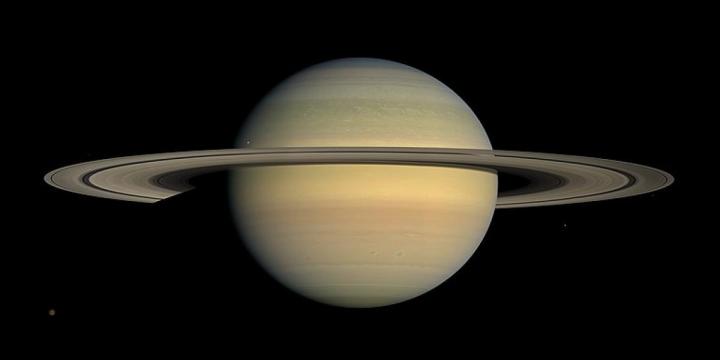
You’ve heard about the race to get humans back to the moon via the Artemis program, but there’s another moon race going on in our solar system, with planets vying for the title of most moons. Previously, Jupiter was the champion with its 95 known moons, but in an unexpected development, Saturn has pulled into the lead thanks to the recent discovery of 62 new moons there.
Astronomers observed Saturn’s rings and their immediate vicinity using new techniques that can detect fainter moons, and with the new discoveries, Saturn now boasts an impressive 145 moons. As well as being the planet in our solar system with the highest number of moons, it’s also the first planet with more than 100 known moons.

It’s difficult to see many of Saturn’s moons because they are so small and dim compared to the planet. The latest batch of moons was identified from data collected by the Canada France Hawaii Telescope (CFHT) using a technique called shift and stack, in which a set of sequential images is stacked into one to track the movement of a moon, allowing researchers to see objects that would be too dim to observe in a single image. That let the researchers go from seeing a selection of dots, which could be asteroids or other objects, to tracking distinct moons.
“Tracking these moons makes me recall playing the kid’s game [connect the dots], because we have to connect the various appearances of these moons in our data with a viable orbit,” said lead researcher Edward Ashton of the University of British Columbia in a statement. “But with about 100 different games on the same page and you don’t know which dot belongs to which puzzle.”
This method was useful for identifying irregular moons, which are unlike regular moons as they have elliptical orbits. Previously, Saturn had 24 known regular moons and 58 known irregular moons, but the new research was able to more than double the number of irregular moons to 121.
As well as being a neat finding, the study of these irregular moons could help us to learn about how moons form. It is thought that the irregular moons formed in groups from collisions, as regular moons collided and splintered to form many smaller irregular moons.
“As one pushes to the limit of modern telescopes, we are finding increasing evidence that a moderate-sized moon orbiting backwards around Saturn was blown apart something like 100 million years ago,” said fellow researcher Brett Gladman.
Editors’ Recommendations


